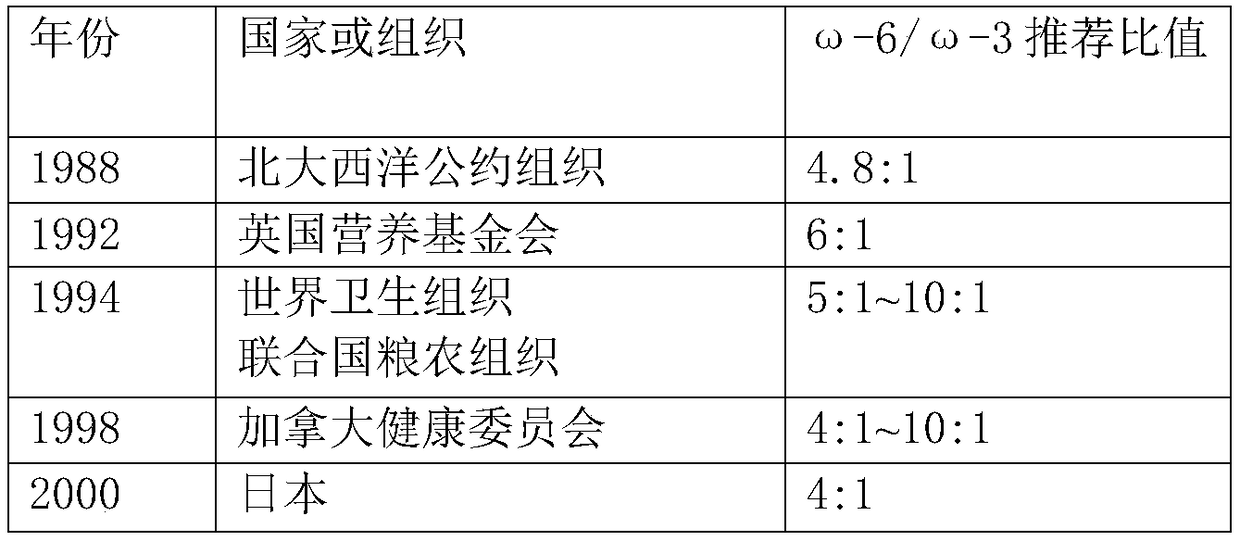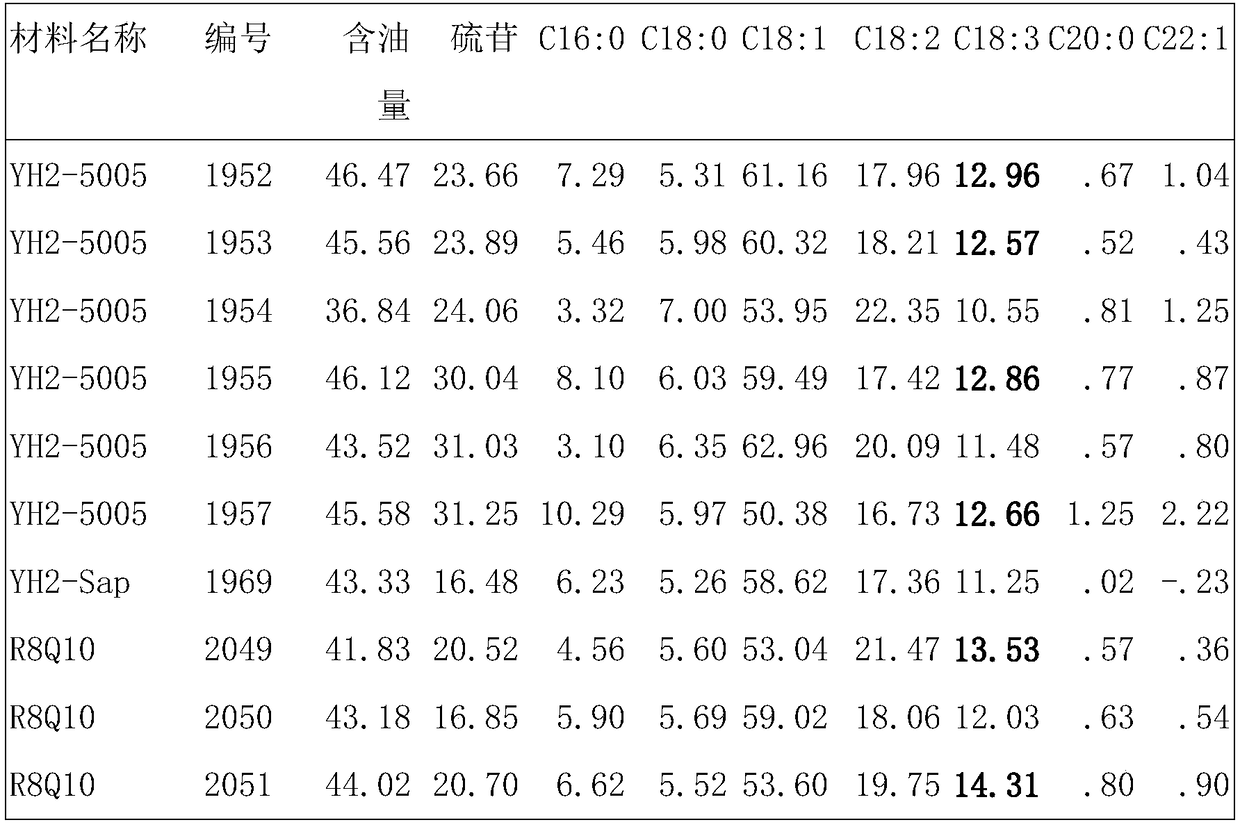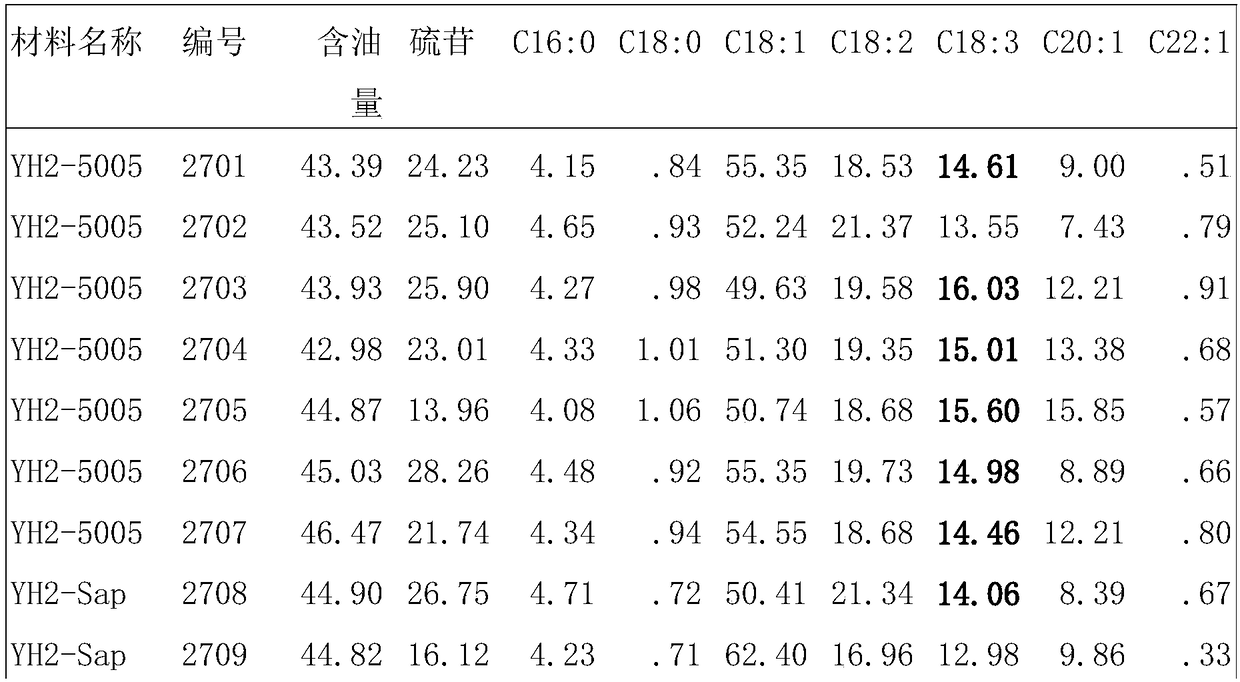High-linolenic acid rape gene donor and application thereof
A gene donor, linolenic acid technology, applied in application, plant genetic improvement, angiosperm/flowering plants, etc., to achieve the application value, protect cardiovascular and cerebrovascular health, and increase the effect of food quality
- Summary
- Abstract
- Description
- Claims
- Application Information
AI Technical Summary
Problems solved by technology
Method used
Image
Examples
Embodiment 1
[0061] Example 1: Research and breeding process of R8Q10, YH2-Sap, YH2-5005
[0062] Through hybridization among rapeseed varieties, combined with a large number of FOSS 5500 near-infrared diffuse reflectance instruments, it was found in 2015 that three different sources, low erucic acid and low glucosinolate resources, had high linolenic acid content (Table 2). These materials were screened in 2016, 2017, and 2018. As a result, the frequency of single plants with high linolenic acid in their offspring became higher and higher, and gradually stabilized (Table 3). The overall quality of different strains detected by near-infrared is:
[0063] (1) YH2 / Qian 5005, abbreviated YH2-5005, linolenic acid content 14.5-16.0%, linoleic acid 18.5-19.7%, oleic acid 49.6-55.3%, oil content 43.9-46.5%;
[0064] (2) YH2 / Sapphire, referred to as YH2-sap, linolenic acid 13.0-14.9%, linoleic acid 17.0-21.3%, oleic acid 50.4%-62.4%, oil content 44.6-44.9%;
[0065] (3) R8Q10, pedigree Rfo / Qin 7...
Embodiment 2
[0078] Embodiment 2: the application of R8Q10 in breeding
[0079] By crossing R8Q10 with high-oil-content rape inbred line Shuang8, two lines with a linolenic acid content of about 15% were screened from the F3 generation of R8Q10-Shuang8. The test results are shown in Table 5. Its offspring also had lines with higher than 15% linolenic acid.
[0080] Table 5: The content of linolenic acid screened in the F3 generation of R8Q10-Double 8
[0081]
Embodiment 3
[0082] Embodiment 3: Breeding of high linolenic acid hybrids
[0083] Using YH2-5005, YH2-Sap to cross with Polima CMS a sterile line ZH9A, F 1 On behalf of male sterility, YH2-5005 and YH2-Sap were continued to be backcrossed for more than 2 generations, and the sterile lines YH2-5005A and YH2-SapA were initially selected.
[0084] Since R8Q10 itself contains a restorer gene for cytoplasmic male sterility (CMS), it is a restorer line for Ogura CMS and PolimaCMS. In the future, the restorer line R8Q10 can be used to pollinate the sterile lines YH2-5005A and YH2-SapA respectively to produce high linolenic acid rapeseed hybrids.
PUM
 Login to View More
Login to View More Abstract
Description
Claims
Application Information
 Login to View More
Login to View More - R&D
- Intellectual Property
- Life Sciences
- Materials
- Tech Scout
- Unparalleled Data Quality
- Higher Quality Content
- 60% Fewer Hallucinations
Browse by: Latest US Patents, China's latest patents, Technical Efficacy Thesaurus, Application Domain, Technology Topic, Popular Technical Reports.
© 2025 PatSnap. All rights reserved.Legal|Privacy policy|Modern Slavery Act Transparency Statement|Sitemap|About US| Contact US: help@patsnap.com



